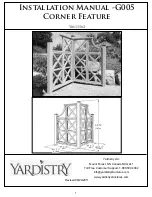
•
The sensor is applied too tightly.
•
Defibrillation.
•
A blood pressure cuff is inflated on the same extremity as the one with the sensor
attached.
•
There is arterial occlusion proximal to the sensor.
•
Poor peripheral perfusion.
•
Loss of pulse/cardiac arrest.
To use the sensor:
•
Select an appropriate sensor.
•
Apply the sensor as directed, and observe all warnings and cautions presented in
the sensor user manual.
•
Clean and remove any substances, such as nail polish, from the application site.
•
Periodically check to ensure that the sensor remains properly positioned on the
patient.
High ambient light sources that can interfere with the performance of the sensor are:
•
Surgical lights (especially those with a xenon light source).
•
Bilirubin
lamps.
•
Fluorescent
lights.
•
Infrared heating lamps.
•
Direct sunlight.
To prevent interference from ambient light, ensure that the sensor is properly applied, and
cover the sensor site with opaque material.
If interference due to patient activity presents a problem, try one or more of the following to
correct the problem:
•
Verify that the sensor is properly and securely applied.
•
Move the sensor to another site.
•
Use an adhesive to the sensor.
•
Use a new the sensor with fresh adhesive backing.
•
Keep the patient still, if possible.
Summary of Contents for VITAL TEST
Page 2: ......
Page 24: ...Impostazioni d allarme Impostazioni di immagazzinamento...
Page 73: ...3 3 14 Exit Return Exit menu by Exit in menu Return to the previous menu by Return in the menu...
Page 107: ...Systemeinstellung Alarmeinstellung Speichereinstellung Abbildung 3 8 Men s...
Page 132: ......
















































